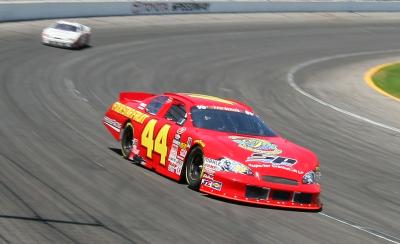
Fluid dynamics is a complex subject; every time you think you understand one aspect of it, it seems as though you've missed some tiny, all-too-pertinent detail that will make or break the entire construct. Such is the case with spoilers, splitters, wings, ramps, canards and air dams. While the layman might use these terms interchangeably, the fact is that they all act in different ways in terms of their effects on a car's high-speed stability, handling balance and fuel economy.
Technically speaking, there's no such thing as a front spoiler; and to the extent that there is, it's called an "air dam." By definition, a spoiler "spoils" existing airflow patterns on a car's body to smooth airflow and reduce drag. They're not intended to block airflow, create downforce (the opposite of lift) or establish new airflow patterns, all of which a front "spoiler" does. While it may seem a bit semantic, this concept is key to understanding how different types of front aerodynamics -- often collectively and incorrectly referred to as spoilers -- affect performance and fuel economy.
The simplest and most common type of front spoiler is called an air dam, and it does just what it sounds like it does. An air dam is just a piece of bodywork that extends downward from the front bumper and reduces the amount of air flowing under the car. This does two things; first, it keeps high-speed air from "catching" on protuberances under the car and creating drag, and it reduces lift by decreasing the amount of potential energy going under the car. An air dam would ideally scrape the ground as you drive, and will generally improve the car's fuel efficiency and high speed stability.
Though often used in conjunction with an air dam, a splitter is an entirely different animal. A splitter is a thin, flat, horizontal "shelf" extending frontward from the bottom of the air dam. Normally, air encountering the bottom of the air dam would have to pressurize and become turbulent before it splits and goes either under the car, over the hood or around the sides. A splitter acts like a knife, cleanly cleaving the airflow in two so that it remains laminar, or straight and turbulence-free. A splitter -- often referred to as the "front wing" -- creates a powerful pocket of pressurized air in front of the bumper, which shoves the front of the car down and creates downforce.
Downforce and lift will always hurt a car's fuel economy because they force the car to expend energy doing something it doesn't need to do -- namely, to either compress the springs or try to fly. The longer a front splitter is, the larger the air pocket it can contain and the more downforce it will produce; good for grip at high speeds, but bad for fuel economy. Additionally, any angled surface on the front bumper that directs airflow upward -- an angled splitter, a ramp or the wing-like canard -- will generally hurt fuel economy by increasing frontal pressure and downforce.
There are a few exceptions to the "air dam helps economy, downforce hurts it" rule. Canards are one of them. A small canard strategically mounted on the corner of an air dam helps to control airflow over the sides of the car, which keeps it out of the wheel-wells and impacts where it will end up behind the car. This can reduce the car's total drag, which may offset the frontal pressure increase caused by the canard. A splitter extending well under the car will act as a partial "belly pan," increasing air velocity under the engine and reducing total drag.